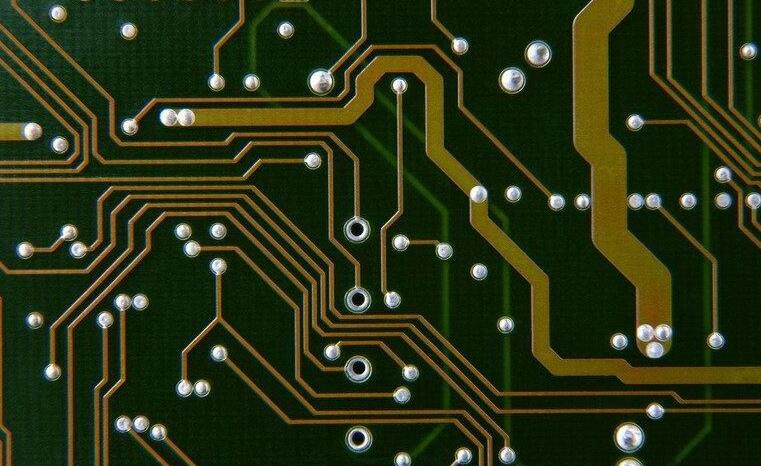Basic process of PCB design & basic principles and common sense of layout
The general PCB design process is as follows:
Preliminary preparation - PCB structure design - net guide table - rule setting - PCB layout- wiring - wiring optimization and silk printing - network and DRC inspection and structure inspection - output light drawing - light drawing review - PCB board production / proofing data - PCB board EQ confirmation of plant engineering - patch data output - project completion.
1: Preliminary preparation
This includes preparing package libraries and schematics. Before proceeding with PCB design, we must first prepare the logic package of the schematic SCH and the package library of the PCB. The package library can be the library that comes with pads, but it is generally difficult to find a suitable one. It is best to build the package library by yourself according to the standard size information of the selected device. In principle, make the PCB package library first, and then make the SCH logic package. PCB packaging library requirements are high, which directly affects the installation of the board; SCH logic packaging requirements are relatively loose, as long as you pay attention to the definition of the pin attributes and the corresponding relationship with the PCB packaging. PS: Pay attention to the hidden pins in the standard library. After that is the design of the schematic diagram, and when it is done, it is ready to start the PCB design.

2: PCB structure design
In this step, draw the PCB surface in the PCB design environment according to the determined circuit board size and various mechanical positioning, and place the required connectors, buttons/switches, screw holes, assembly holes, etc. according to the positioning requirements. And fully consider and determine the wiring area and non-wiring area (such as how much area around the screw hole belongs to the non-wiring area).
3: Guide net table
It is recommended to import the board frame before the guide net table. Import DXF format frame or emn format frame
4: Rule setting
Reasonable rules can be set according to the specific PCB design. The rules we are talking about are PADS's constraint manager. Through the constraint manager, the line width and safety spacing are restricted at any link in the design process, where the constraint is not met. During subsequent DRC testing, it will be marked with DRC Markers.
The general rule setting is placed before the layout because sometimes some fanout work must be completed during the layout. Therefore, the rules must be set before the fanout. When the design project is large, the design can be completed more efficiently.
Remarks: Setting rules is to complete the design better and faster, in other words for the convenience of the designer.
The general settings are:
1. The default line width/line spacing of ordinary signals.
2. Select and set vias
3. Line width and color settings of important signals and power supplies.
4. Board layer settings.
5: PCB layout
The general layout is carried out according to the following principles:
(1) According to the reasonable division of electrical performance, it is generally divided into: digital circuit area (that is, afraid of interference and interference), analog circuit area (fear of interference), power drive area (interference source);
(2) Circuits that complete the same function should be placed as close as possible, and the components should be adjusted to ensure the most concise connection; at the same time, adjust the relative position between the functional blocks to make the connection between the functional blocks the most concise;
(3) For high-quality components, the installation location and installation strength should be considered; heating components should be placed separately from temperature-sensitive components, and heat convection measures should be considered when necessary;
(4) The I/O drive device should be as close as possible to the edge of the printed board and to the lead-out connector;
(5) The clock generator (such as crystal oscillator or clock oscillator) should be as close as possible to the device that uses the clock;
(6) Between the power input pin of each integrated circuit and the ground, a decoupling capacitor (generally a monolithic capacitor with good high-frequency performance is used); when the space of the circuit board is dense, it can also be used in several integrated circuits. Add a tantalum capacitor around.
(7) A discharge diode (1N4148 is sufficient) should be added to the relay coil;
(8) The layout requirements should be balanced, dense and orderly, and not top-heavy or heavy.
Special attention needs to be paid. When placing components, the actual size (occupied area and height) of the components and the relative position between the components must be considered to ensure the electrical performance of the circuit board and the feasibility and convenience of production and installation. At the same time, under the premise of ensuring that the above principles can be reflected, the placement of the components should be appropriately modified to make them neat and beautiful. For example, the same components should be placed neatly and in the same direction, and should not be placed "scatteredly".
This step is related to the overall image of the board and the difficulty of wiring in the next step, so a little effort must be taken into consideration. When laying out, you can make preliminary wiring and fully consider the places that are not sure about it.
6: Wiring
Wiring is the most important process in the entire PCB design. This will directly affect the performance of the PCB board. In the PCB design process, wiring generally has three realms:
The first is distribution, which is the most basic requirement for PCB design at this time. If the lines are not connected and there are flying lines everywhere, it will be a substandard board, and it can be said that you have not yet started.